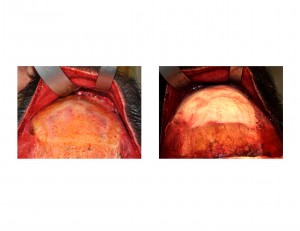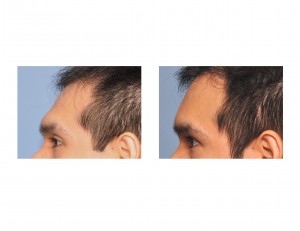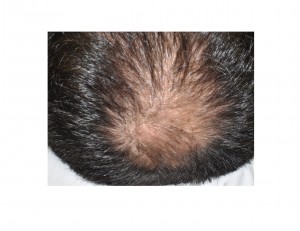Background: A brow bone prominence is largely a male feature caused by a greater pneumatization (expansion of air cavity) of the frontal sinuses than in women. While female brow bones are relatively flat, most men will have some degree of prominence or ridging that creates a brow bone break as it ascends into the forehead. Thus some degree of a brow prominence is well tolerated in men and may even be aesthetically desireable as a strong gender trait.
Excessive pneumatization of the frontal sinuses creates a brow bone prominence that extends well beyond the natural plane or slope of the forehead. Whether a brow bone prominence in some cases is excessive is a matter of personal judgment, in others it is so extreme that it is obvious. Brow bone reduction surgery, usually by an osteoplastic flap method, is the only effective treatment to reshape this lower portion of the forehead.
When considering whether brow bone reduction should be done, the shape of the forehead above it must also be considered. In many cases, the upper forehead is normal and setback of the brow bones is all that is needed. In other cases, a combination of brow bone setback and forehead augmentation produces the best profile change. In rare cases, the brow bone position is normal and it is the excessively sloped forehead that is the culprit. (pseudo brow bone prominence.
Case Study: This 35 year-old male felt he had too strong of a brow bone and disliked his forehead shape. He had a significant retroclined angulation to his forehead and this raised the question as to whether his brow bones had too much horizontal projection or that the forehead projection was deficient. Computer imaging was done to determine whether brow bone reduction or forehead augmentation produced a better forehead profile appearance.



Case Highlights:
1) A prominent brow bone can be the result of a recessed forehead. (pseudo brow bone prominence)
2) Computer imaging done in the profile view can determine whether forehead augmentation or brow bone reduction produces the better aesthetic facial result.
3) Forehead augmentation is done through an open scalp incision and can be done with either hydroxyapatite or acrylic bone cements.
Dr. Barry Eppley
Indianapolis, Indiana


